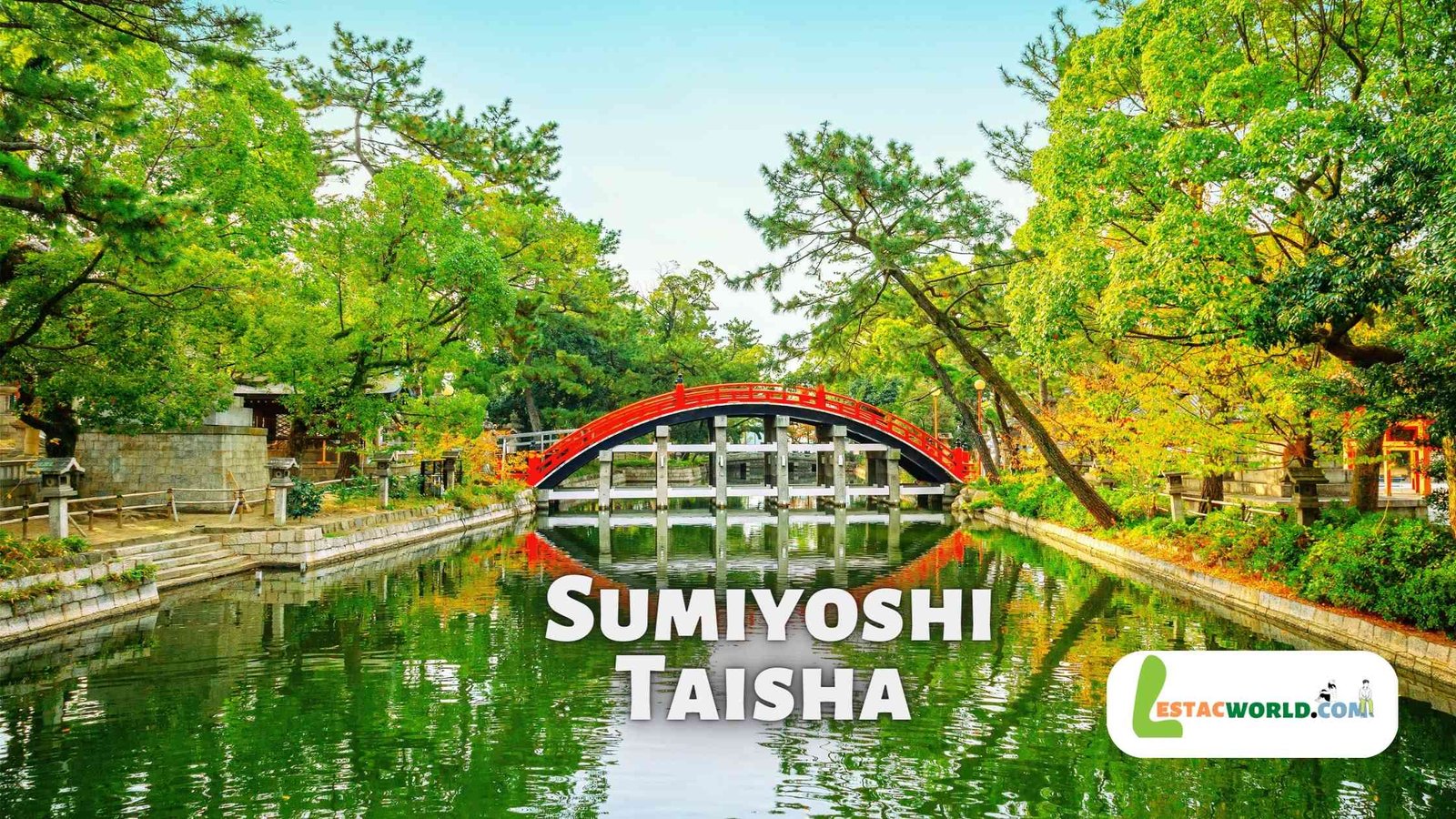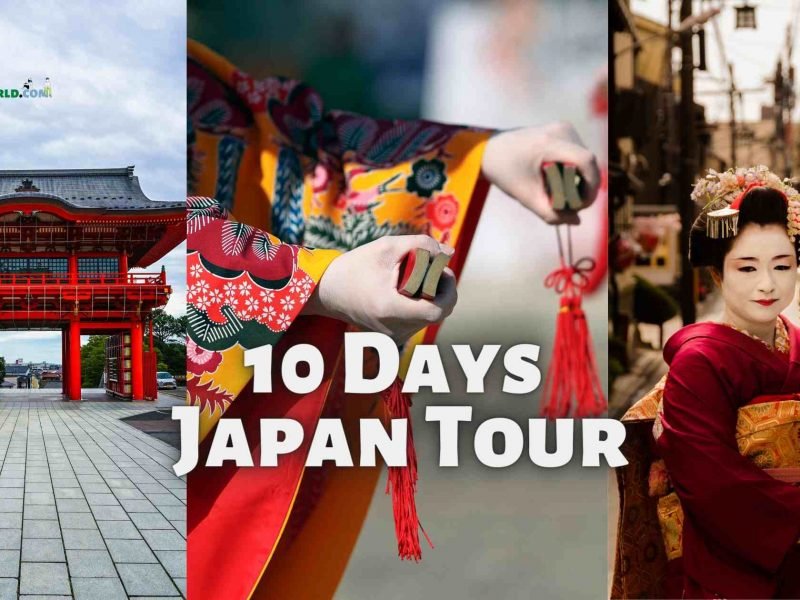About Sumiyoshi Taisha
Shinto worship is practiced at Sumiyoshi Taisha, which is a shrine that can be found in the Sumiyoshi ward of Osaka, Japan. It has a history that goes back more than 1,800 years, making it one of the most important Shinto shrines in Japan as well as one of the oldest. It is claimed that the three Sumiyoshi deities watch over mariners, sailors, and other people who work on the water. The shrine is devoted to them.
A distinctive type of Shinto architecture known as Sumiyoshi-zukuri can be found at the Sumiyoshi Taisha. This style of architecture is distinguished by a straightforward, rustic design with thatched roofs and wooden pillars. The structures of the shrine have been honored by the Japanese government with the status of Important Cultural Properties.
The temple plays host to a number of festivals all throughout the year, the most notable of which being the annual Sumiyoshi Matsuri, which takes place in July and is considered to be one of the three largest festivals in all of Japan. During the festival, there will be performances of traditional music and dance, as well as a parade of portable shrines.
When paying a visit to Sumiyoshi Taisha, guests are expected to conduct themselves in a manner befitting of a shrine, such as prostrating themselves at the torii gate and washing their hands and mouths at the temizuya (purification spring) before proceeding to the main shrine. Additionally, guests are strongly discouraged from taking photographs of the principal shrine or of other worshippers.
The most convenient way to go to Sumiyoshi Taisha is by using the train or bus; the station that is located the closest to the shrine is located on the Nankai Main Line. Anyone who has even a passing interest in the history, culture, or religion of Japan should make a point of paying a visit to the shrine.
History time line of Sumiyoshi Taisha
Here is a timeline of the history of Sumiyoshi Taisha, one of the oldest and most significant Shinto shrines in Japan:
- 211 AD: According to legend, the Sumiyoshi deities (Sokotsutsuo-no-kami, Nakatsutsuo-no-kami, and Uwatsutsuo-no-kami) were enshrined at Sumiyoshi Taisha.
- 3rd century AD: The shrine is believed to have been established as a place of worship for the Sumiyoshi deities during this time.
- 5th century AD: The shrine’s first buildings were constructed during this century.
- 10th century AD: Emperor Murakami ordered the reconstruction of the shrine, which had been damaged by flooding.
- 13th century AD: The shrine underwent major renovations, and several new buildings were added.
- 16th century AD: The shrine was again reconstructed following a major fire.
- 19th century AD: The shrine underwent major renovations during the Meiji period, and many of its current buildings date from this time.
- 1945 AD: The shrine suffered significant damage during World War II, but was later restored to its former state.
- 21st century AD: Sumiyoshi Taisha remains an important cultural and religious site in Japan, and attracts millions of visitors each year.

How to reach Sumiyoshi Taisha
In Osaka, Japan’s Sumiyoshi district is where you’ll find the revered Sumiyoshi Taisha. The following are some of the routes that lead to the shrine:
By Train: When traveling by train, the Sumiyoshi Taisha Station on the Nankai Main Line is the station that is located the furthest away from the shrine. Take the Nankai Line from Osaka, then get off at the station when you reach it. The shrine can be reached on foot in about ten minutes.
By Bus: Getting there by bus: You can catch a bus to the Sumiyoshi Taisha-mae bus stop from either Osaka Station or Namba Station. From where the bus arrives, the shrine is easily accessible on foot.
Take a cab: there is no shortage of taxis in Osaka, and these vehicles are able to bring passengers directly to the Sumiyoshi Taisha. Depending on the amount of traffic, the journey from Namba Station will take approximately 20 minutes.
By renting a bicycle or going on foot: If you are staying in the vicinity of Sumiyoshi Taisha, you might be able to get there by either renting a bicycle or going on foot.
When you have arrived to the shrine, you will have the opportunity to wander around the grounds and take in the serene environment. When paying a visit to the shrine, it is essential to show respect for its customs and traditions and to behave in an appropriate manner. This includes making a respectful bow at the torii gate and purifying one’s hands and mouth at the temizuya (purification fountain) before proceeding to the main shrine.
Do's and Dont's at Sumiyoshi Taisha
When visiting Sumiyoshi Taisha, it’s important to follow proper etiquette to show respect for the customs and traditions of the shrine. Here are some do’s and don’ts:
Do’s:
- Bow at the torii gate and the main shrine as a sign of respect.
- Wash your hands and mouth at the temizuya (purification fountain) before approaching the main shrine.
- Respect the peaceful atmosphere and avoid loud conversations or disruptive behavior.
- Take off your shoes when entering the shrine buildings.
- Make a small monetary offering at the main shrine, if you wish.
Don’ts:
- Do not take photographs of the main shrine or other worshippers, as it is considered disrespectful.
- Do not eat or drink inside the shrine buildings or on the grounds.
- Do not smoke on the grounds.
- Do not bring pets or animals onto the shrine grounds.
- Do not touch or disturb any sacred objects or offerings.
Following these guidelines will help you have a pleasant and respectful visit to Sumiyoshi Taisha, and show appreciation for the rich history and traditions of the shrine.
Highlights of Sumiyoshi Taisha
In Osaka, Japan’s Sumiyoshi district, there is a Shinto shrine known as Sumiyoshi Taisha. This shrine is both aesthetically pleasing and historically significant. The following is a list of some of the most notable features of the shrine:
- Sumiyoshi-zukuri architecture: Architecture known as Sumiyoshi-zukuri: Sumiyoshi Taisha is famous for its one-of-a-kind type of Shinto architecture known as Sumiyoshi-zukuri. This form of Shinto architecture is characterized by a straightforward, rustic design with thatched roofs and wooden pillars.
- Three Sumiyoshi deities: The shrine is devoted to the three Sumiyoshi deities, who are believed to provide protection to mariners, sailors, and other people who work on the water. These gods are held in high esteem over the entirety of Japan and play a significant role in both the mythology and culture of Japan.
- Annual festivals: Throughout the course of the year, Sumiyoshi Taisha plays host to a number of festivals. Chief among these is the annual Sumiyoshi Matsuri, which takes place in July and is regarded as one of the three largest festivals in all of Japan. During the festival, there will be performances of traditional music and dance, as well as a parade of portable shrines.
- Beautiful grounds: The shrine is located in a stunning natural setting, and its grounds include a number of tranquil gardens and ponds. The grounds are also home to the temple.
- Historical significance: Sumiyoshi Taisha has a history extending back more than 1,800 years, making it one of the oldest and most significant Shinto shrines in Japan. Its name literally translates to “Sumiyoshi Great Shrine.” The structures of the shrine have been honored by the Japanese government with the status of Important Cultural Properties.
Sumiyoshi Taisha offers its guests the opportunity to learn about Japan’s illustrious past and culture while taking in the tranquil mood and breathtaking scenery of their surrounds. If you have even the slightest interest in Japanese architecture, mythology, or spirituality, you absolutely have to pay a visit to this shrine.






Comment (0)